
When my partner decided to quit his job and start an architecture consultancy, we knew it would be an uphill battle. To begin building a client base, we decided to focus our efforts on email marketing—a proven channel that would give us plenty of flexibility in how we communicated with leads and customers.
But in order to attract subscribers, we needed something valuable to offer them in exchange. That something is called a lead magnet.
Here’s everything you need to know about lead magnets, including what they are and how to create them—along with a few lead magnet examples to learn from.
Table of contents
What is a lead magnet?
A lead magnet is a piece of content or some other perk that attracts potential customers to your business—enough that they’ll give you their email address in exchange for it. Once you’ve gotten their contact information, you can then use your lead generation funnel to turn those leads into customers.
9 lead magnet examples
If you’ve ever visited a new website and then spent what felt like an eternity clicking out of pop-ups asking for your email or phone number, you’ve encountered a lead magnet.
But lead magnets don’t always have to be annoying—in fact, the best ones make you want to fork over your contact information in exchange for something valuable. Here are a few popular ideas:
Gated content
Gated content is content locked behind a signup form so that visitors have to give you something (usually an email address) before getting to access it. This content should be valuable enough to your target audience that they’d be willing to trade their contact information to see it. Popular types of gated content include:
-
eBooks
-
Webinars
-
Templates
-
Toolkits
For example, Litmus offers a resource library that includes several gated content formats to entice visitors.
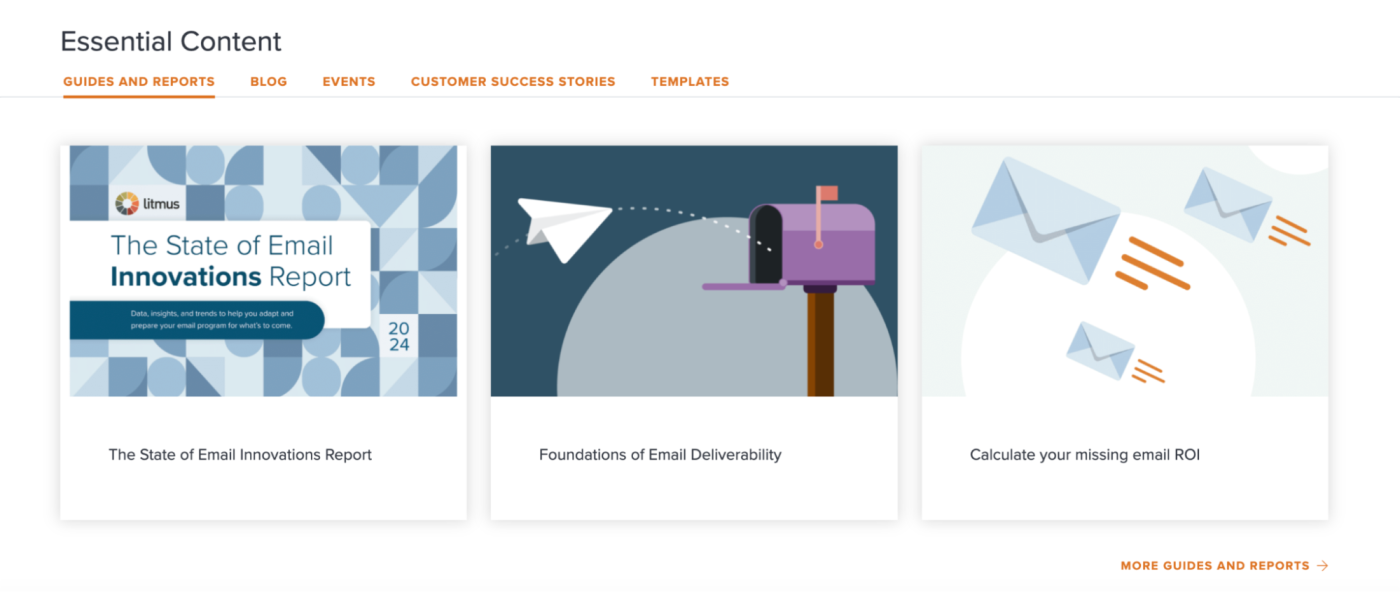
Click on any of those, and you’ll get a pop-up asking you for your email address first.
Discount on a first purchase
If you have an online store, offering a first-time discount can kill two birds with one stone: you’ll entice new visitors to make a purchase, and they’ll throw their email into the bargain.
This pop-up from Peet’s Coffee offers a discount and free shipping to first-time visitors who enter their email addresses.
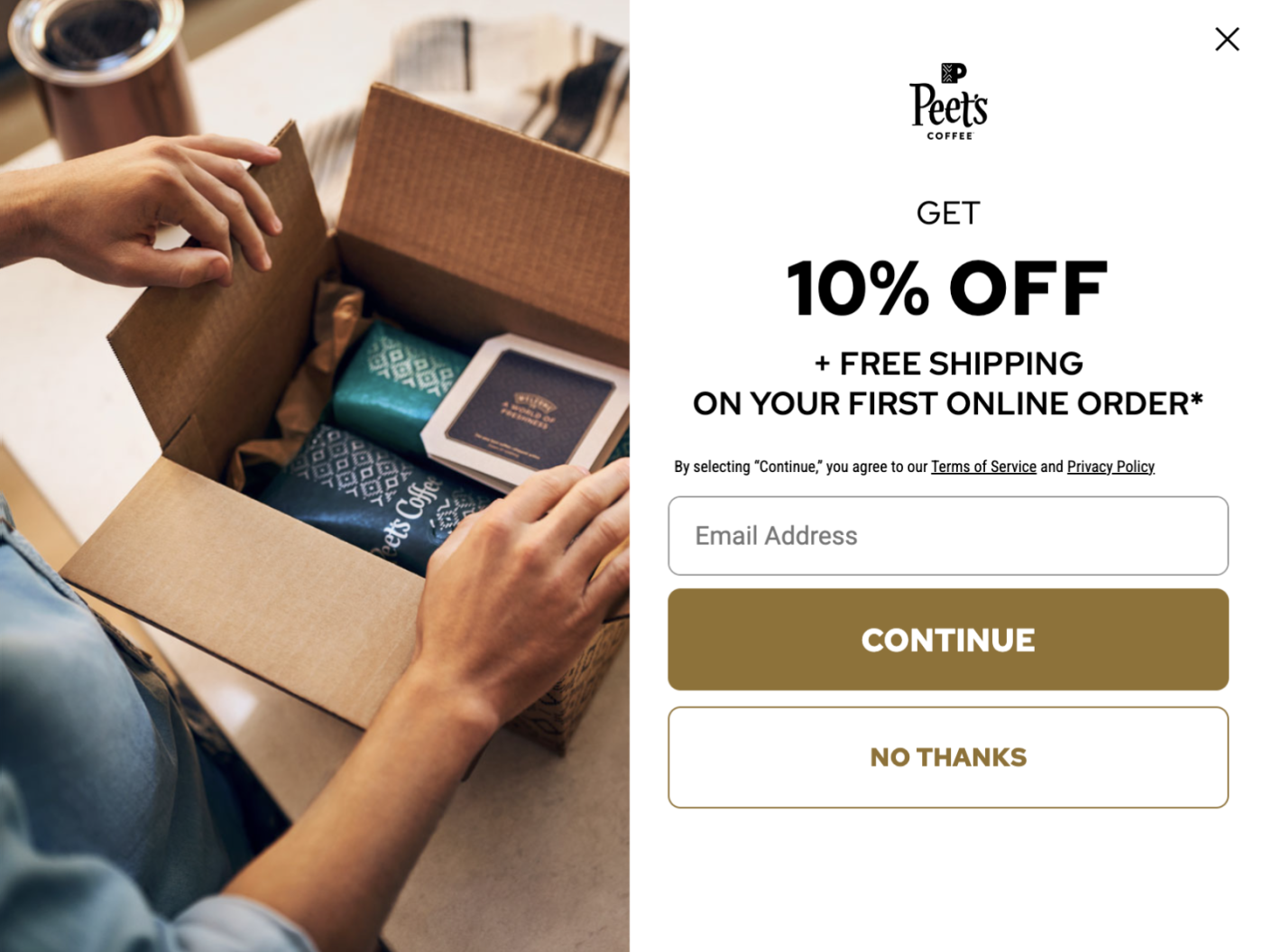
Early access to exclusive deals
Another lead generation strategy is to promise exclusivity. If your visitors are already interested in your product, they’ll be drawn in by special offers and deals that they couldn’t get anywhere else—and that Dave from Accounting doesn’t know about.
This CTA box at the bottom of Parade’s homepage is a great example of a subtle invitation to what feels like an exclusive club.

Free consultation
Coaches and consultants like those at SEO Discovery often offer a free initial consultation as a way to build a prospect list. Not only does a free session let you build trust and demonstrate your expertise, but you can also add those leads to your email list for long-term nurturing.
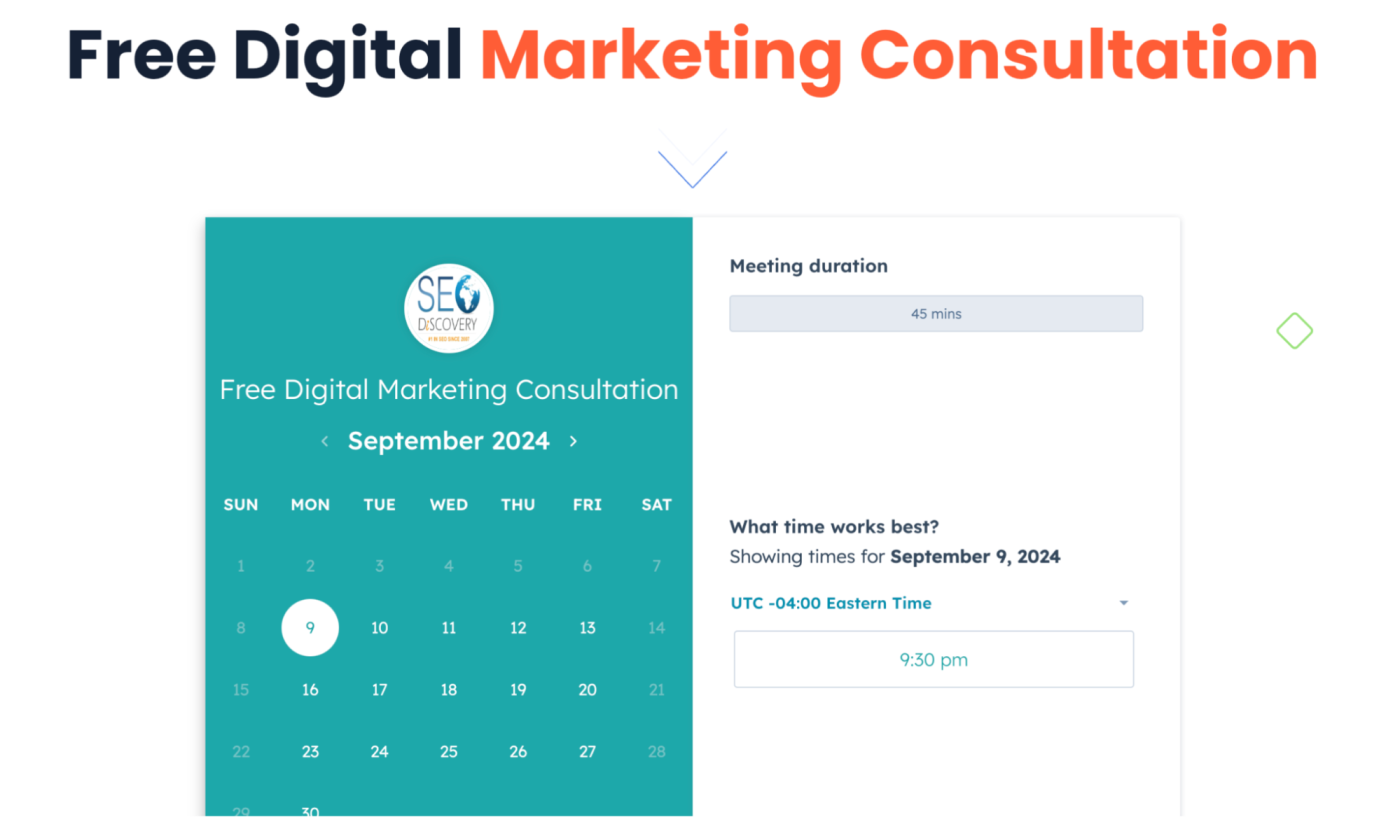
If you’re good at what you do, this is also a kind of sales tactic. (If you’re not, lead magnets are the least of your problems.)
Exclusive webinar or other event
Because webinars are presentations about a topic your leads are interested in, they make for a great lead generation tool. At Zapier, we frequently hold live webinars to help our audience get the most out of automation.
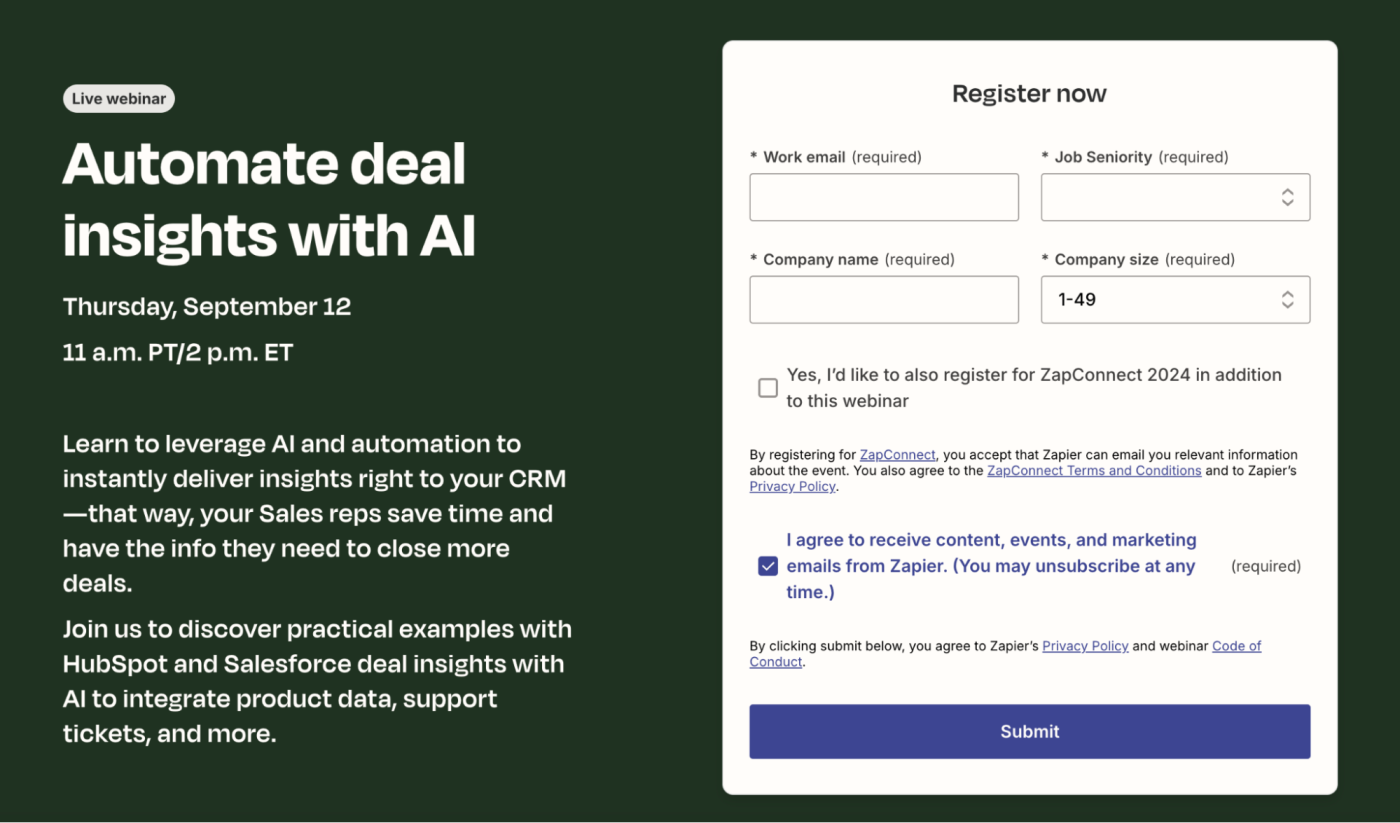
A lot of our attendees are already Zapier customers, but depending on the topic, we might attract some new folks, too. And because we ask for their email address, we now have a way to communicate with them—even if they end up not attending the webinar because they were washing their hair that day.
Access to a stream of exclusive content
Exclusive content series—like email and video courses—are popular lead magnet ideas. When a prospect signs up for your free course, they’ll receive an exclusive series of content educating them about a topic related to your industry.
For example, Film Editing Pro offers introductory video courses on video editing to give potential customers a taste of what they can get from the paid plans.

Once the course is over, the lead is closer to being ready to use the product—and the company can nurture them toward a sale.
Samples or a free trial of your product
Some brands, including software platforms like BambooHR, choose to offer a free trial of their main product as a way to attract prospects. Trial subscriptions or product samples can be a great lead magnet option if you don’t have the time or inclination to create separate content like a newsletter or eBook. There’s nothing wrong with using what you’ve got.
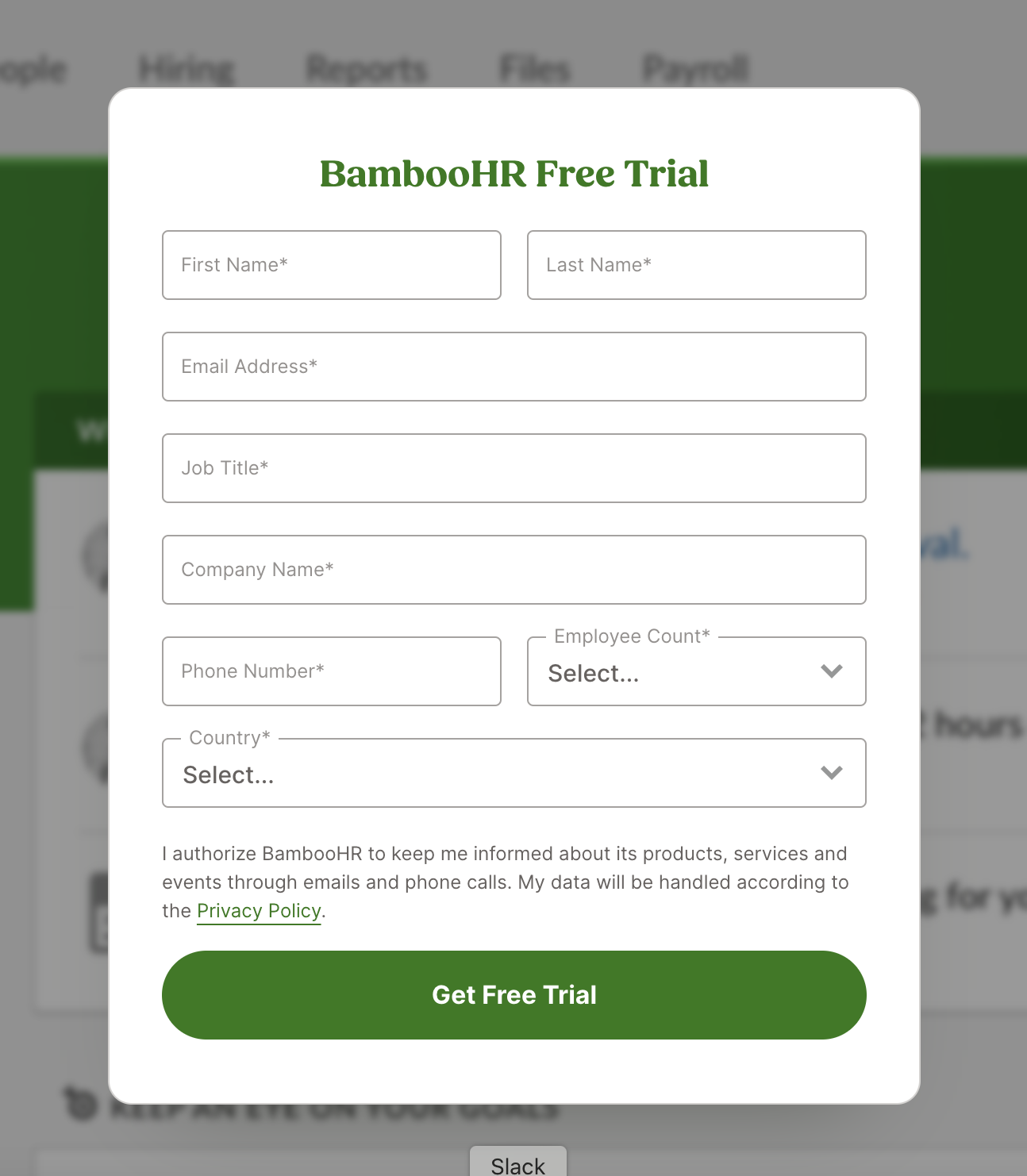
Access to a proprietary tool related to your industry
Who can resist a good quiz? If you’re looking for a lead magnet idea, you could always channel the fun of discovering your Hogwarts house or Sex in the City character (is my Millennial showing?) into something a little more related to your industry. For example, Adobe has a quiz to help you find your personal creative style.

After taking the quiz, you’ll need to enter your email to receive the results. (Can it be frustrating to get close to the end and then be asked to give up your email address? Sure—but if you’ve done your job well, lots of people will decide it’s worth it.)
Membership in an exclusive online community
Building a community around your brand has plenty of benefits, like increasing your brand recognition, generating revenue (for paid communities), and creating a built-in audience for future campaigns and products. But you can also use access to your community as a lead magnet.
A membership site like MightyNetworks, Thinkific, or Kajabi can be a great platform to offer a free or paid community for your audience. For example, this exclusive community for BIPOC writers and filmmakers is hosted on MightyNetworks.
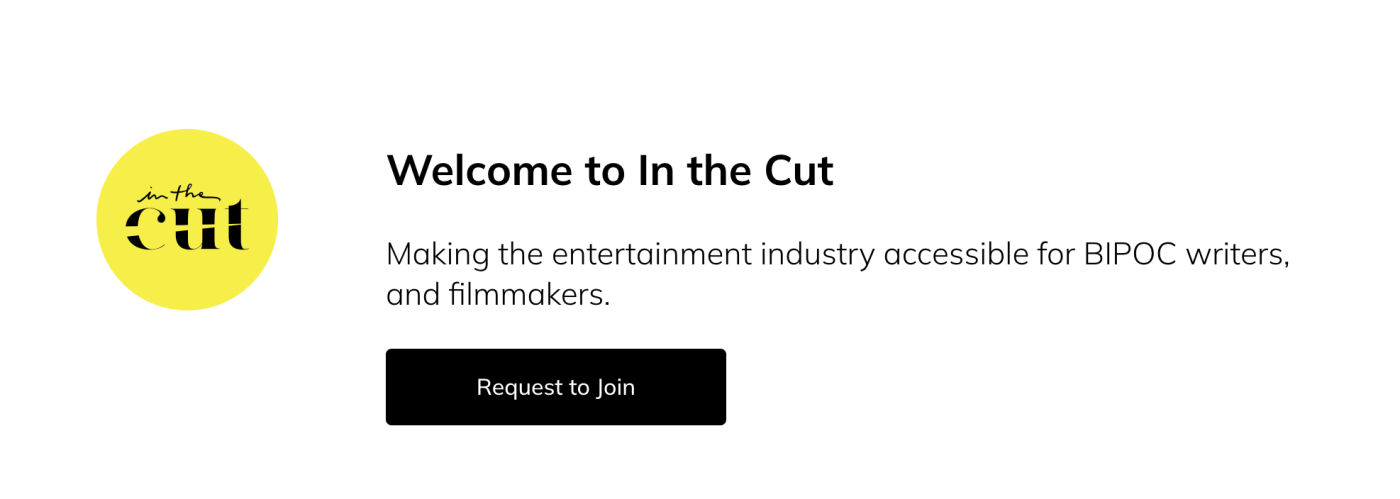
How to create a lead magnet that converts in 5 steps
So, how do you decide which lead magnet idea is right for you—and how do you implement it effectively? I’ll walk you through how we did it for my husband’s architecture consultancy, and I hope you can take inspiration to build your own lead magnet funnel and nurture workflow.
-
Understand your customers’ pain points
-
Create an enticing opt-in
-
Decide where the lead magnet should live—and help people find it
-
Segment your leads to personalize the experience
-
Repurpose your lead magnet
1. Understand your customers’ pain points
It’s your responsibility to understand the problems your customers are experiencing. If you don’t already have a buyer persona, now’s a great time to develop one. You’ll do this based on:
-
Direct customer feedback
-
Existing data on your target audience
-
Research into your competitors’ marketing
2. Create an enticing opt-in
Because almost anything can be considered a lead magnet if you use it to collect prospects’ contact information, you need to narrow the scope of what you plan to offer.
Start with the lead magnet examples I showed above, but remember that whatever you provide needs to be catered specifically to your audience, based on what they would find valuable enough to exchange their email for. That’s why understanding your customers—and learning what kinds of content they’ll consider valuable—is a crucial starting point.
For example, it didn’t make sense for us to offer a discount because we’d need a certain amount of information before we could even give them a quote.
We knew our prospective clients are looking to be informed about the entire process they’re getting into—folks who are building their own property want to be involved in the process and understand it deeply. So we decided to offer an in-depth eBook, which gives them comprehensive information about buying land (we even collaborated with industry partners to be sure it was up to date and relevant).
For folks who were further along in their buying journey, we also created a checklist to help them gather the documents they need and learn how to evaluate consultants before taking the next step in the design-build process. Bonus: if they book a consultation and have already reviewed the checklist, they’re way more prepared for our meeting!
You can use Zapier’s pre-built free offer template to collect customer information through a highly customizable form. After someone submits the form, they’ll immediately receive an automated email with your free offer. All this is happening while your leads’ data is neatly organized in a connected table.
3. Decide where the lead magnet should live—and help people find it
Your lead magnet can live in a number of places:
-
On a dedicated landing page. A landing page gives you room to show off what the lead magnet offers and includes a clear call to action (CTA). This is where you’ll link people from other spots as well.
-
In your blog posts. Include a smaller CTA within your blog posts, so people who find your content valuable can move down the funnel to the next stage.
-
On your home page. This is for anyone who reaches you via Google Business Profile or another search that gets them directly to your home page. A smaller CTA will do the trick here too.
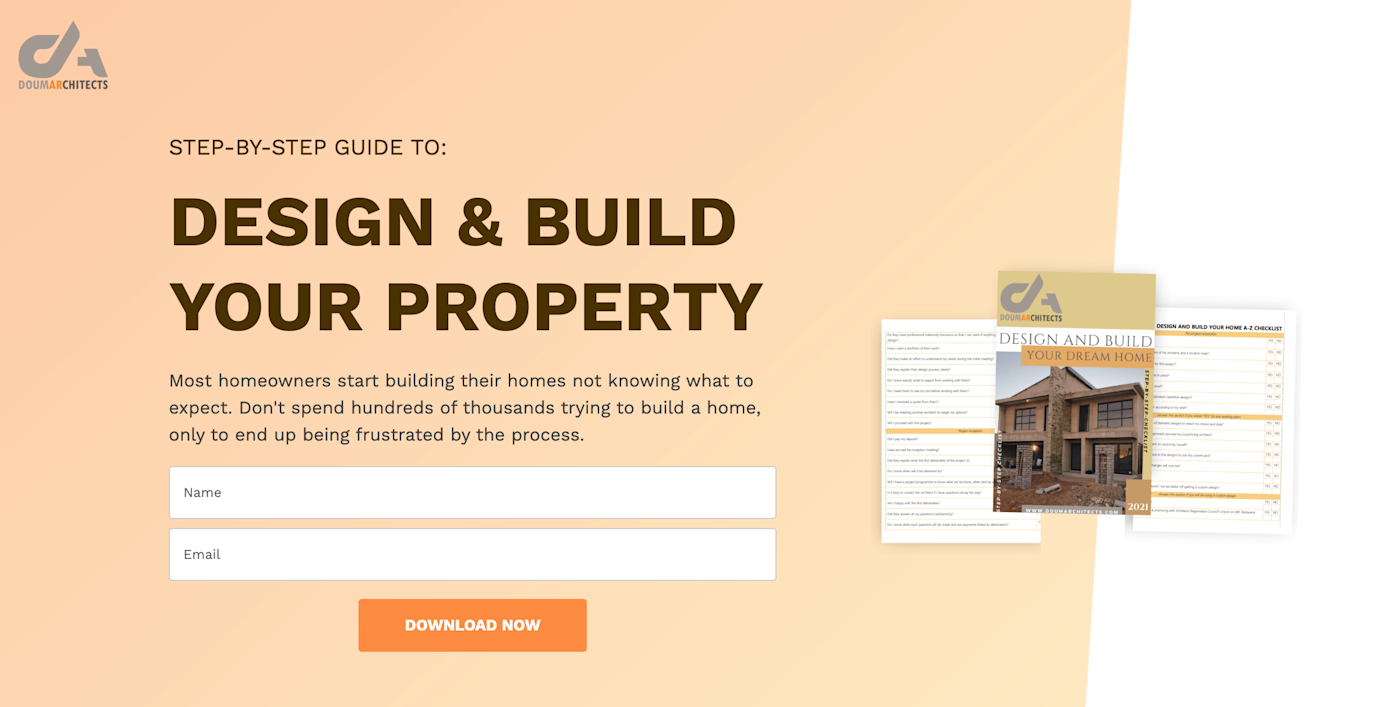
Of course, you need to make sure people can find your lead magnet. The best way to do this is to do some keyword research, and write content (usually in the form of blog posts) that targets those keywords and offers valuable insights for the readers. Google knows good content marketing from bad content marketing, so you need to create in-depth, authoritative content to support your target audience.

The kind of content you produce depends on where in the customer journey your intended audience is. For example, we targeted folks who were building their own home or commercial property. So our content started from buying land right up to the building and maintenance stages.
Many of our competitors just have a website with a portfolio of their work because they believe that the work will speak for itself. That may work for big-name agencies to an extent, but especially if you’re a smaller operation, you have to build credibility and trust. Showcasing your understanding of your audience’s questions and concerns before they even ask builds that trust—and if you do your SEO due diligence, it will get them to your website.
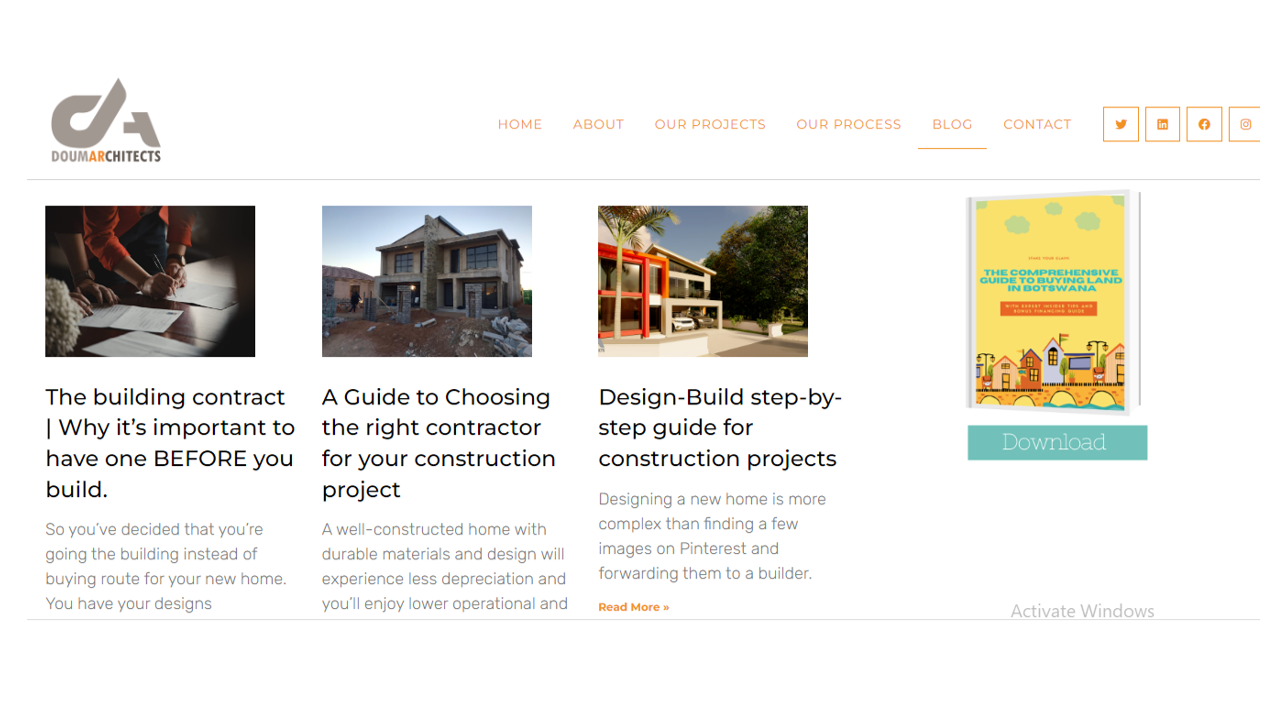
Of course, you can’t rely on Google alone to get people to your lead magnet, so you’ll also want to think outside the box and create campaigns to promote and distribute your lead magnet. Here are some ideas to get you started:
-
Optimize your Google Business Profile page. This is the low-hanging fruit that gets us discovered with the “architect near me” search.
-
Collaborate with other businesses—maybe their audience would find your content helpful, and promoting it would help both of you.
-
Set up a booth at a conference, expo, or farmer’s market, and collect email addresses in person. If you bring your computer or use a QR code, folks can sign up on your landing page, so the lead magnet gets delivered to them immediately.
-
Sponsor a popular newsletter that your target audience loves with a link to your lead magnet’s landing page.
-
Create paid lead generation ads on LinkedIn, Facebook, or another platform your audience uses a lot.
What if people share your gated content? Once someone downloads our eBook, they’re able to share it—via email, text, whatever else—which means that people get the lead magnet without having to give us their email address. At first, that was concerning, but in reality, it’s a great thing—for two reasons. 1. It means the original downloader found it helpful enough to share, so you’re coming across as credible. 2. The people who get the content from someone else will also find it valuable and might come to you even more primed to buy than if they’d just landed on your website.
4. Segment your leads to personalize the experience
Once you have your lead’s email address, you need to do something with it. You should, of course, follow email marketing best practices (or the B2B version, if that’s your audience).
But the most important thing is to personalize the experience. And I don’t mean writing “Hi [name]” at the beginning of the email. I’m talking about email segmentation. By dividing your email list into smaller groups based on shared characteristics, you can be sure you’re emailing each person with something that’s actually relevant to them.
For example, we added a different tag to subscribers who downloaded the eBook versus the checklist. We knew those folks were at different stages in their buyer journey, so we created different email sequences for each. Then, once a lead books a consultation, they get moved into a different email sequence, and so on.
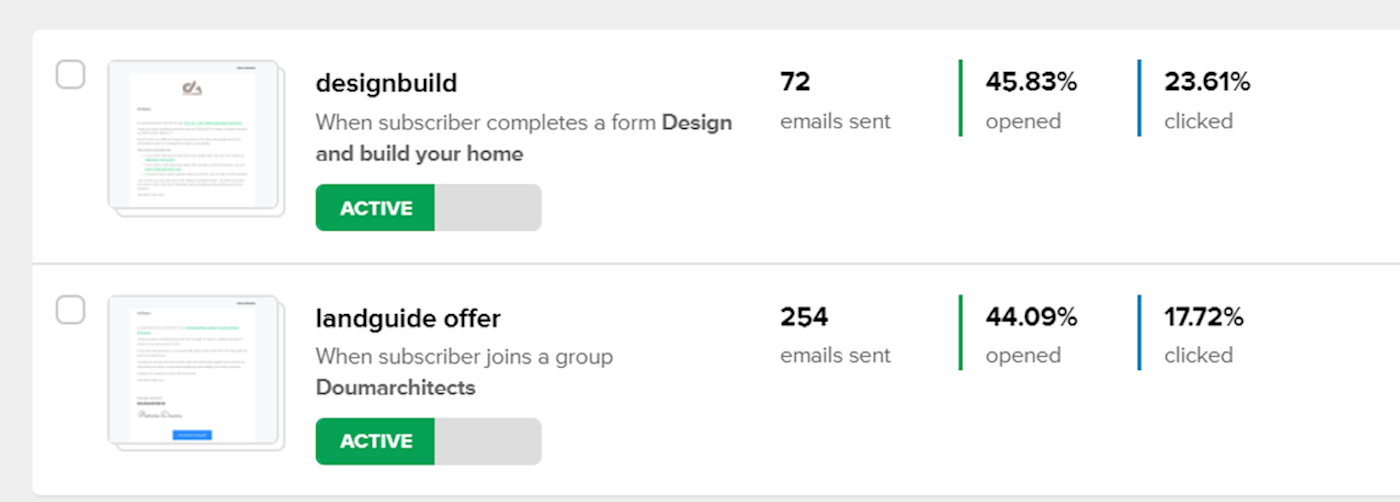
Make sure you’re being intentional with your emails—you worked hard to get that email address, but the unsubscribe button is just a click away. Each email needs to offer value and have a clear call to action. For example, some of our nurture emails offer tips and then encourage leads to reply to the email with questions. Instead of going back and forth over email, we then offer them a free consultation (that other consultants charge for).

You can get a lot of this done using automation too, so there’s not much manual work involved. Here’s how to automate your email marketing.
5. Repurpose your lead magnet
If you created content for your lead magnet, don’t stop at just using it as a lead magnet—it can become the basis of all sorts of other marketing campaigns.
In our research, we found that the majority of our target audience listened to the lunchtime news on the radio and watched the evening news on TV. Of course, radio and TV ads are expensive, so instead, we collaborated with the host of a popular show: we gave them the content from our eBook, and they built the segment around it. In return, we got scheduled just before the lunchtime news.
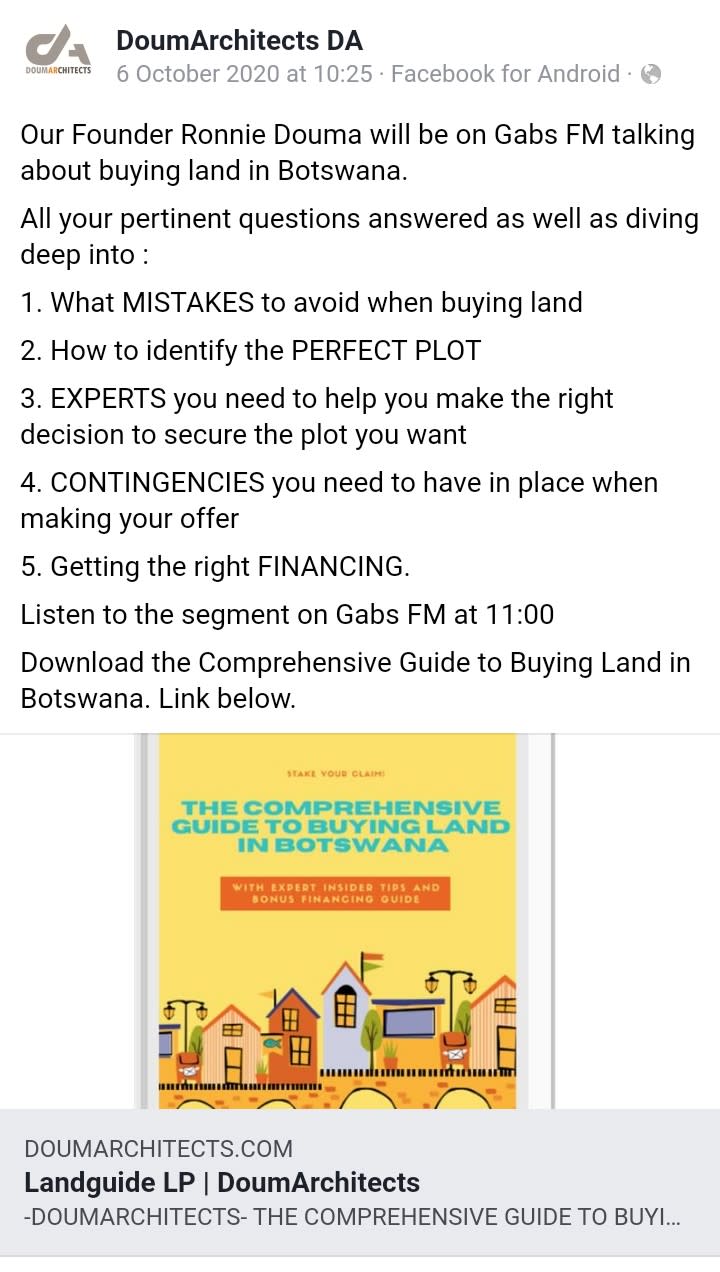
The publicity from this show got us in touch with a reporter that asked us to contribute to their column. And the snowball effect continued.
Our lead magnets saved our business
Because our email list was built using targeted lead magnets, it’s given us a project pipeline that helped the business become profitable during a time when we didn’t think we’d survive. And 80% of our customers come from the email list we built with our lead magnets (the rest are referrals from current and past clients). It’s worth a try.
As you develop your lead magnets and lead nurture workflow, here are some more resources that can help:
This article was originally published in August 2022. The most recent update, with contributions from Nicole Replogle, was in September 2024.






